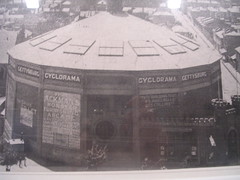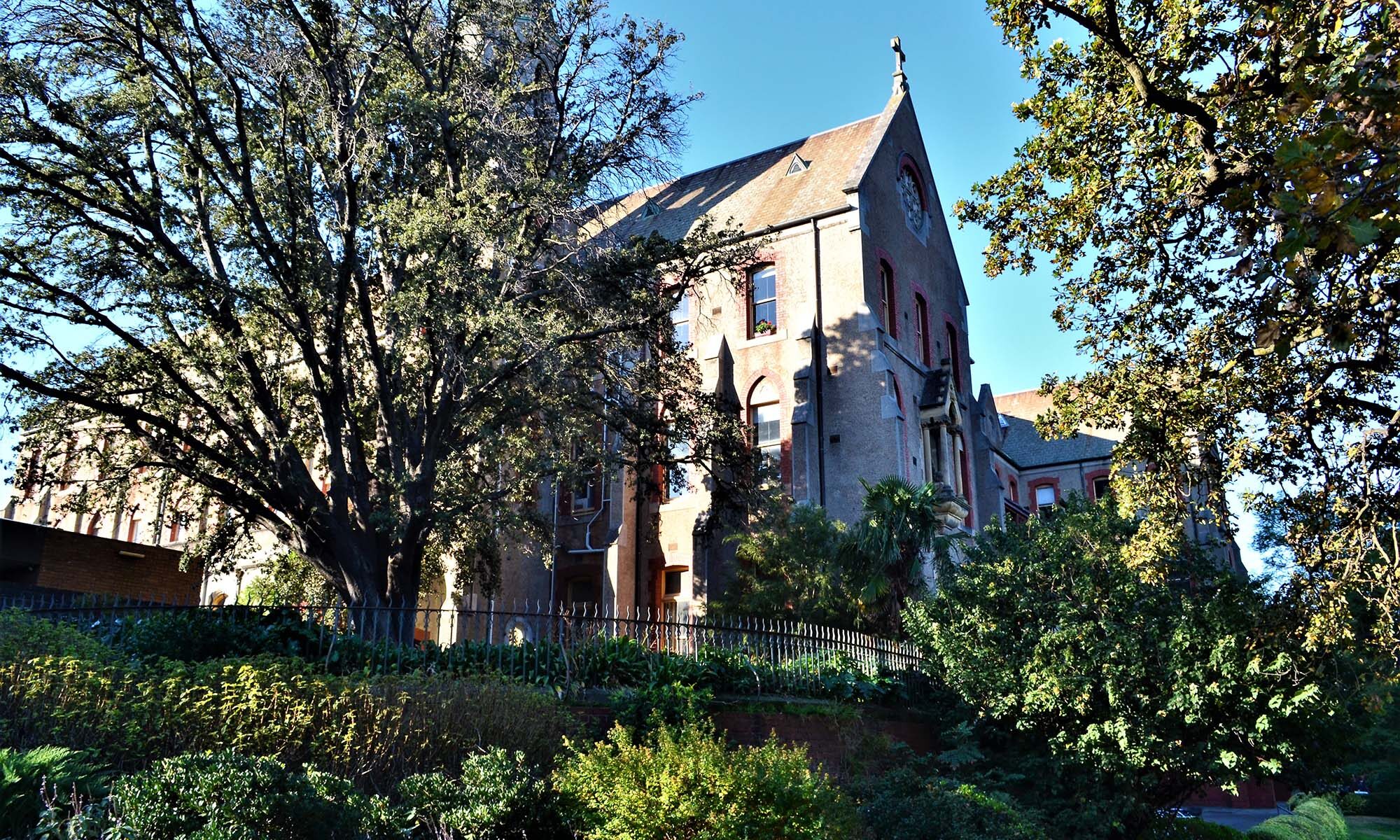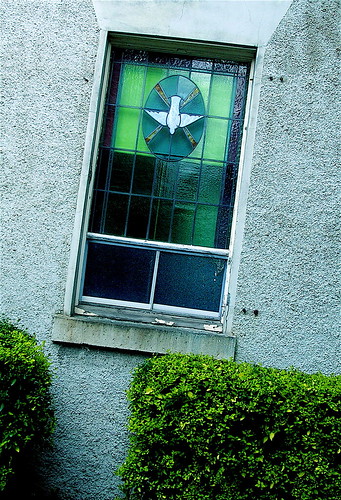
The Fitzroy and Collingwood Sketchbook also told me this:
“St Vincent’s, the most easterly of these great [charity] hospitals, became closely linked with the residents of the inner suburbs. Today it is still conducted by the same order of nuns who founded the institution [the Sisters of Charity].
The more recent extension of the hospital, and those sections erected in 1928, straddle what was once a roaring colonial fairground, where a host of noisy and sometimes disreputable sideshows attracted a wide-eyed throng on weekends and holidays.
Later, at the turn of the century, part of the site was used for a wondrous structure called the Cyclorama, owned by the well-known sporting entrepreneur, John Wren. At the Cyclorama there were regular boxing and wrestling contests and later it was used to house a spectacular series of dioramas where the public could pay for the privilege of seeing tableaux showing the Battle of Waterloo, the Eureka Stockade and the Panorama of Jerusalem.”
Funny thing is, a cyclorama is not a place where cycles go around and around. It is a long painting affixed to the walls of a circular room. The punter stands in the middle. Now there is a book about them by Dr Mimi Colligan of Monash University (“the only historian to have made a detailed study of Australasian panoramas”, quite a claim to fame). They were very popular in the 19th century:
“The most popular traveled from city to city to provide local entertainment — much like a modern movie. As the viewers stood in the center of the painting, there would often be music and a narrator telling the story of the event depicted. Sometimes dioramas were constructed in the foreground to provide additional realism to the cyclorama.
Many circular and hexagonal shaped buildings were constructed in almost every major US and European city to provide a viewing space for the cycloramas.”
Wren’s cyclorama was variously a cycle track and boxing and wrestling theatre, but he bought it at the moment when cinema began to throw cyclorami into a decline.


